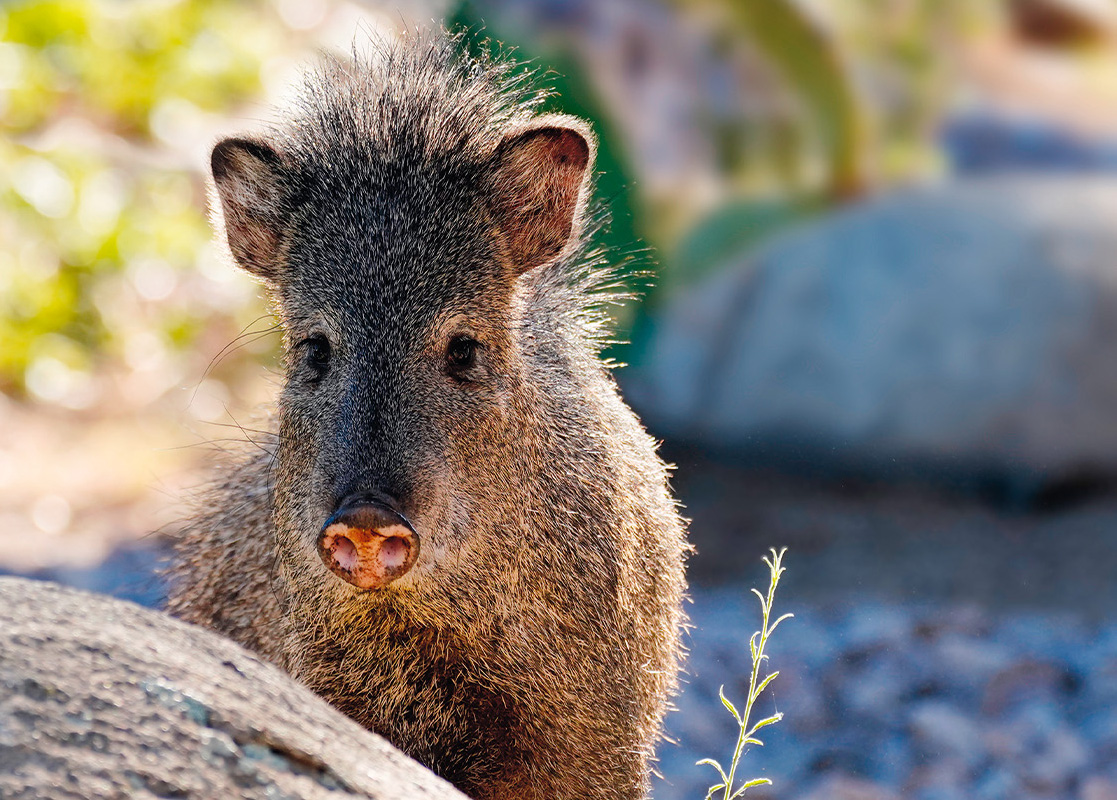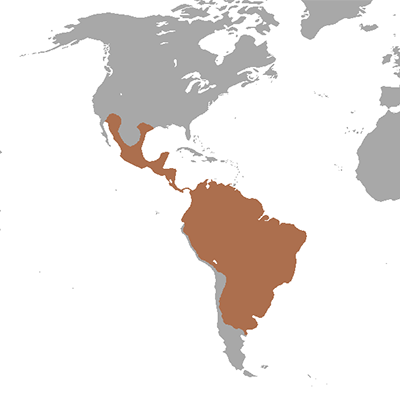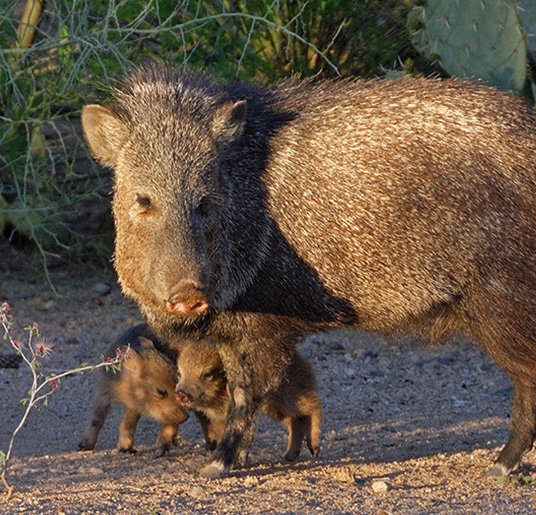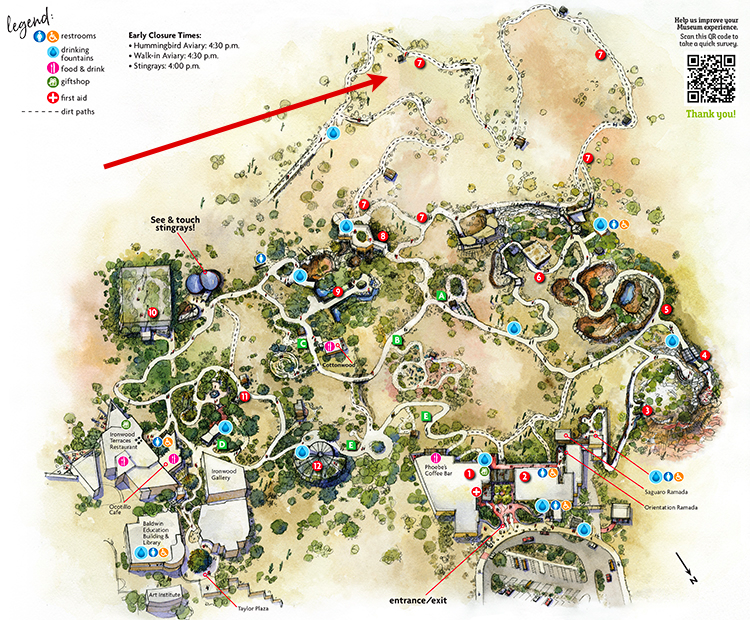Javelina

About
These animals are often mistaken for pigs. It makes sense since they have snout-like noses, long canine teeth, and short legs. But they’re not that closely related! Javelinas and pigs had a common ancestor, but javelinas live in the Western Hemisphere, whereas pigs inhabit the Eastern Hemisphere. Javelinas and pigs have been separated for almost 40 million years of evolution! They are also known as the collared peccary because of the lighter ring of hair around their neck & shoulders. Peccaries can live in large family groups, though young males sometimes travel around on their own. Humans can often sense if javelina have been close by because they cause a stink! Javelina are quite ripe, but for good reason. They emit musk from a gland near their rear. Javelina in a family group will rub against each other’s glands (called a javelina handshake!) so that the individual scents mix and transform into a group perfume. Because they have poor eyesight, this family scent is important to help individuals stay together.
Challenges
Ever had a javelina knock over a trash can and make a mess? Or wander through the neighborhood to munch on pumpkins in the fall? Sometimes it can be tricky for humans and javelina to co-exist, but they are very entertaining to watch from afar!
Food Web
Javelina are mostly herbivores, feeding on the fruits and pads of prickly pear cactus in addition to mesquite beans, agave, shrubs, grasses, and the roots of various plants. However, they might feed on lizards, dead birds, or rodents if available.
Javelina are eaten by mountain lions, bobcats, jaguars, coyotes, and humans.

Habitat and Range
Javelina can be found in Arizona, New Mexico, Texas, through Mexico and south all the way to Argentina.
Javelina live in desert washes, saguaro and palo verde forests, oak woodlands and grasslands. Houses that are close to washes will likely have javelina in the neighborhood and are a usual sighting in Tucson, Arizona.

Family Life
Javelina live in large family groups (called squadrons) of usually about 10 members. Each family defends a territory which includes their sleeping and feeding areas. They communicate with each other through smells and sounds! Young javelina are called “reds” due to the rusty color of their hair. They usually have 1-2 young at a time, and females can have babies at any time of the year.
Glossary
- Musk:
- A strong-smelling substance that comes through the skin of an animal out of a small sac below the animal’s skin.
- Gland (in animal):
- An organ that releases a chemical (in this case, musky) substance.
- Territory:
- An area that an animal defends for space, mates, or other resources like food.
Fun Facts
- When startled, javelina will either defend themselves or scatter in a hurry.
- Javelina can be feisty if scared, so always keep your dog on a leash!
- One herd was documented with 53 individuals!
- Javelina have poor vision and rely heavily on their sense of smell.
- Javelina vs. Wild Boar
Conservation
Javelina are doing well and are not listed as threatened or endangered.
At The Museum
View on Map

See them at the Desert Loop Trail, open year-round.
Also on the Trail: coyotes, lizards, blue palo verdes, and saguaros.
Accessibility: The Desert Loop Trail is half a mile long following a dirt path.










